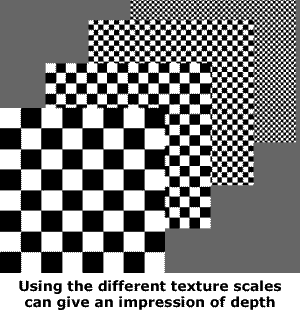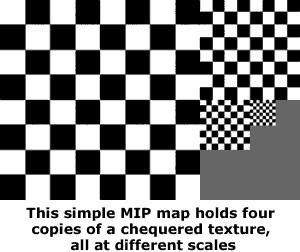“MIP map” is the name given to a collection of images to be used as surface textures when building, or rendering, a 2D representation of a 3D scene. The acronym “MIP” comes from the Latin phrase: multum in parvo which is translated as “many things in a small place”.
Each of the many images stored in the “small place”, or MIP map, holds a copy of the same texture but at a different scale from the others, each being known as a “MIP map level”. The largest-scale copy of the texture is used on surfaces close to the observer’s viewpoint; the next smaller-scale image is used on surfaces a little further away and so on.
Using pre-scaled versions of a single texture saves the processing time that would be required to scale-down a large texture to make it usable on a “distant” surface. Scaling of textures is still usually necessary but, by selecting the version of the texture which is closest to the required scale, the scaling process takes less time and also the possibility of errors being introduced by the scaling process, and the consequent distortion of the texture, is reduced.

Point sampling looks at the different ways textures from a MIP map can be applied to increase their realism.

